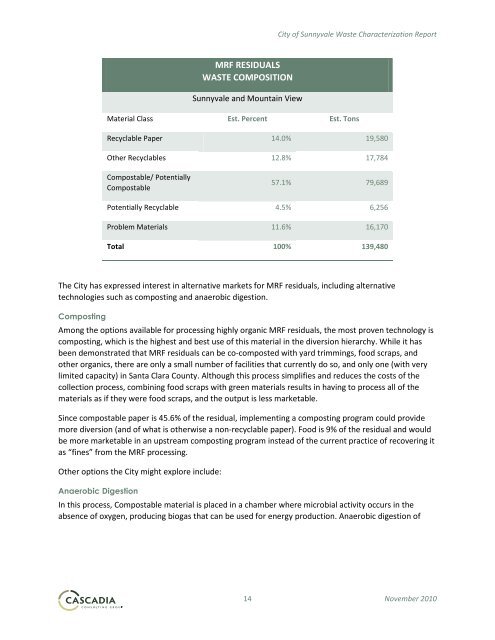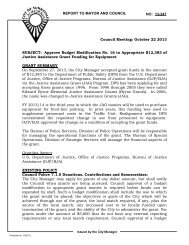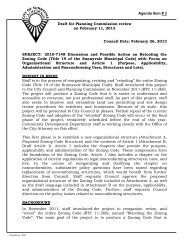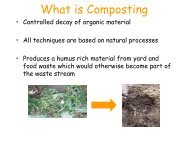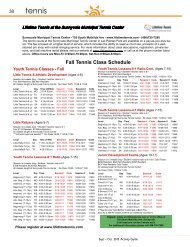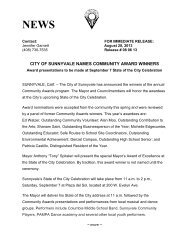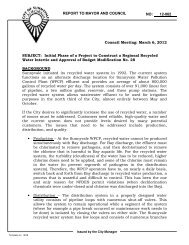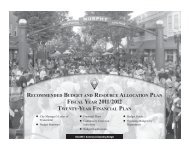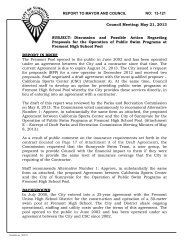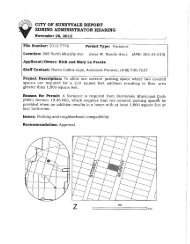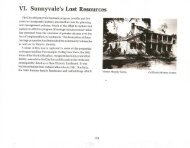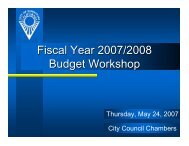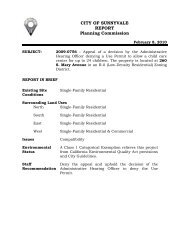City of Sunnyvale Waste Characterization Report
City of Sunnyvale Waste Characterization Report
City of Sunnyvale Waste Characterization Report
Create successful ePaper yourself
Turn your PDF publications into a flip-book with our unique Google optimized e-Paper software.
MRF RESIDUALS<br />
WASTE COMPOSITION<br />
<strong>Sunnyvale</strong> and Mountain View<br />
<strong>City</strong> <strong>of</strong> <strong>Sunnyvale</strong> <strong>Waste</strong> <strong>Characterization</strong> <strong>Report</strong><br />
Material Class Est. Percent Est. Tons<br />
Recyclable Paper 14.0% 19,580<br />
Other Recyclables 12.8% 17,784<br />
Compostable/ Potentially<br />
Compostable<br />
57.1% 79,689<br />
Potentially Recyclable 4.5% 6,256<br />
Problem Materials 11.6% 16,170<br />
Total 100% 139,480<br />
The <strong>City</strong> has expressed interest in alternative markets for MRF residuals, including alternative<br />
technologies such as composting and anaerobic digestion.<br />
Composting<br />
Among the options available for processing highly organic MRF residuals, the most proven technology is<br />
composting, which is the highest and best use <strong>of</strong> this material in the diversion hierarchy. While it has<br />
been demonstrated that MRF residuals can be co-composted with yard trimmings, food scraps, and<br />
other organics, there are only a small number <strong>of</strong> facilities that currently do so, and only one (with very<br />
limited capacity) in Santa Clara County. Although this process simplifies and reduces the costs <strong>of</strong> the<br />
collection process, combining food scraps with green materials results in having to process all <strong>of</strong> the<br />
materials as if they were food scraps, and the output is less marketable.<br />
Since compostable paper is 45.6% <strong>of</strong> the residual, implementing a composting program could provide<br />
more diversion (and <strong>of</strong> what is otherwise a non-recyclable paper). Food is 9% <strong>of</strong> the residual and would<br />
be more marketable in an upstream composting program instead <strong>of</strong> the current practice <strong>of</strong> recovering it<br />
as “fines” from the MRF processing.<br />
Other options the <strong>City</strong> might explore include:<br />
Anaerobic Digestion<br />
In this process, Compostable material is placed in a chamber where microbial activity occurs in the<br />
absence <strong>of</strong> oxygen, producing biogas that can be used for energy production. Anaerobic digestion <strong>of</strong><br />
14 November 2010


